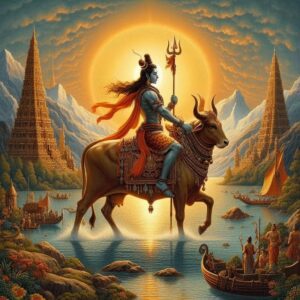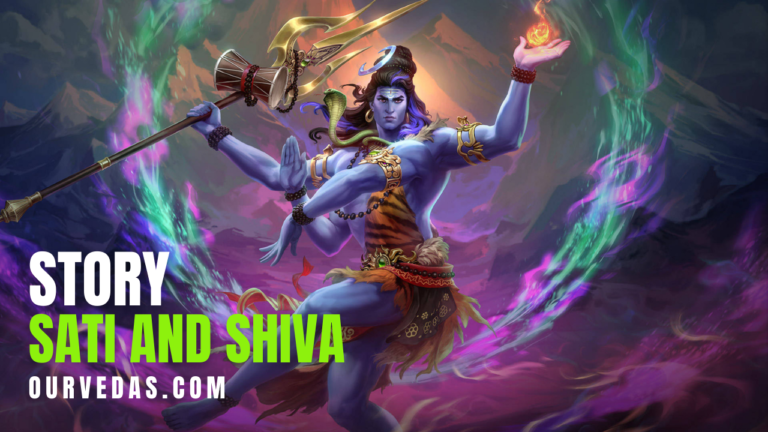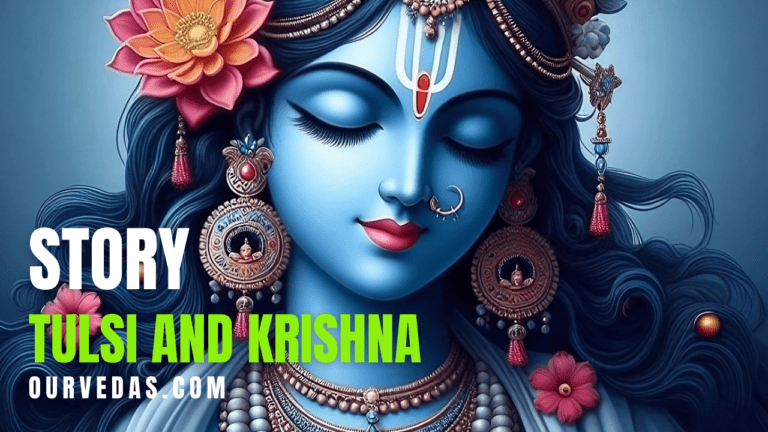Discovering 19 Unique Shiva Avatars
Shiva, one of the principal deities in Hindu mythology has various forms and dimensions. Among these are his 19 unique avatars, each representing different aspects of life and spirituality. From the cosmic dancer Nataraja to the dual-gendered Ardhanarishvara, each incarnations of Shiva has a unique story and symbolism.
Let’s take a closer look at these avatars and their significance. Understanding these avatars not only enriches one’s spiritual journey but also deepens our appreciation for the rich culture of India.
![]()
Introduction to Shiva Avatars
Shiva has multifaceted nature. He is the god of destruction, creation, and preservation. This duality is reflected in his many avatars, each representing a different aspect of his divine nature. These avatars are often depicted in Hindu art and literature.
While there are many different lists of Shiva’s avatars, the most commonly accepted list includes 19 unique incarnations. Each of these avatars has a specific purpose and symbolism, and they are worshipped by devotees for different reasons.
Piplaad
Piplaad is one of the unique avatars of Lord Shiva, embodying protection and guidance. According to Hindu mythology, Piplaad took birth as a son of Sage Dadichi. However, Piplaad was born with a deformity, and his father rejected him. Feeling rejected, Piplaad turned to Lord Shiva for guidance and protection.
Lord Shiva then took the form of a hermit and taught Piplaad 108 yoga postures, which helped him overcome his deformity and become a powerful sage. His life story highlights his journey towards enlightenment, emphasizing devotion and discipline.
![]()
As an avatar, Piplaad represents the ability to overcome adversity through faith in divine power. He is worshipped by those seeking guidance and strength in difficult times. Often depicted with distinctive features that resonate with wisdom and strength, he inspires followers to seek spiritual growth while navigating life’s challenges effectively.
Nandi
Nandi, the sacred bull, serves as the divine vehicle of Lord Shiva. He is often depicted as a white bull with a golden hump and a snake around his neck. Nandi is considered as the gatekeeper of Lord Shiva, and his presence symbolizes loyalty, strength, and steadfastness.
![]()
In Hindu mythology, Nandi is known for his unwavering devotion to Lord Shiva, and he is worshipped as a symbol of faith and devotion.
Devotees believe that worshipping Nandi enhances one’s connection to Shiva. His presence signifies loyalty and discipline in spiritual practices. As a potent symbol of faithfulness, Nandi encourages followers to embrace righteousness while seeking blessings from the supreme deity.
Veerbhadra
Veerbhadra is one of the fierce avatars of Lord Shiva, often depicted as a warrior with a striking appearance. He emerged from the third eye of Shiva, when the god was insulted by his father-in-law, Daksha. Veerbhadra was created to avenge the humiliation of his wife, Sati, who had immolated herself in the fire of her father’s yagna.
Veerbhadra is depicted with multiple arms, each holding weapons, and a third eye on his forehead, symbolizing his divine nature. This avatar is primarily associated with vengeance against those who insult or harm his devotees.
![]()
As a protector, Veerbhadra plays a crucial role in numerous mythological tales. His legendary battle against Daksha Prajapati signifies the conflict between tradition and devotion to true divinity. This narrative not only highlights Veerbhadra’s strength but also emphasizes Shiva’s protective nature towards his followers.
Bhairav
Bhairav, a fierce avatar of Lord Shiva, embodies the essence of transformative energy and protection. Often depicted with a fearsome appearance, Bhairav represents the dissolution of ego and attachment. This aspect emphasizes overcoming fear to attain liberation.
![]()
Worshipped predominantly in Hinduism, Bhairav holds significant importance in various tantric practices. In some traditions, he is considered the supreme deity and worshipped as the ultimate protector and destroyer of evil forces. His fierce appearance and association with cremation grounds also symbolize the cycle of life, death, and rebirth.
He is considered the guardian deity who protects devotees from negative influences while guiding them on their spiritual journey. His presence serves as a reminder that through destruction comes creation and renewal, making him integral to understanding Shiva’s complex nature.
Ashwatthama
Ashwatthama, the son of Dronacharya, holds a significant place among Shiva’s avatars. Renowned for his extraordinary prowess in warfare and his unwavering loyalty, he played a crucial role during the Kurukshetra War.
According to Hindu mythology, Ashwatthama was born with a gem on his forehead that granted him immortality. He is also believed to have inherited some of Lord Shiva’s powers, including his third eye. His character embodies both valor and tragedy.
![]()
In other tales, Ashwatthama was cursed by Lord Krishna when he committed a heinous act during the war. The curse left him in a state of perpetual suffering, unable to die or find peace. This aspect highlights the consequences of abusing one’s powers and the importance of moral integrity.
In various texts, Ashwatthama is depicted as an immortal being cursed to roam the earth eternally. This curse underscores themes of loss and redemption within Hindu mythology. As an avatar of Lord Shiva, he represents the complex interplay between divine power and human emotion, further enriching Shiva’s narrative tapestry.
Sharabh
Sharabh is one of the unique avatars of Lord Shiva, embodying a blend of lion and man. According to Hindu mythology, Sharabh was created by Shiva to counter the destructive power of the demon Tarakasura.
This avatar’s form symbolizes the triumph of good over evil and highlights Shiva’s role as a protector. Sharabh’s appearance symbolizes strength and ferocity. In some texts, he is also associated with the sun and fire, representing the divine power that sustains life.
The significance of this avatar lies in its representation of overcoming obstacles through sheer force and determination. Devotees believe that invoking Sharabh can help them face challenges head-on.
Grihapati
Grihapati, one of the fascinating avatars of Shiva, represents the divine essence within domesticity. This form emphasizes household harmony and family welfare. As Grihapati, Shiva embodies a nurturing spirit who protects and guides his devotees in their personal lives.
![]()
In this avatar, he assumes the role of a guardian deity for homes. Worshipping Grihapati is believed to bring peace and prosperity to households. Devotees often invoke him during rituals for blessings related to family unity and stability in daily life.
Durvasa
Durvasa was an irascible sage known for his short temper and his ability to curse anyone who angered him. He is believed to have been an incarnation of Lord Shiva’s anger, making him a unique avatar of the deity. In Hindu mythology, Durvasa is often depicted as a sage with matted hair and a fierce appearance. He is also known for his intense devotion to Lord Shiva.
![]()
Despite his fierce reputation, he plays a crucial role in various Hindu texts. His blessings are sought after, and many stories illustrate how his curses lead to significant transformations or hardships that ultimately foster growth and understanding among those involved.
Hanuman
Hanuman, revered as the epitome of devotion and strength, is an avatar associated with Lord Shiva. In Hindu mythology, he embodies loyalty and courage. His unwavering dedication to Lord Rama during the epic Ramayana showcases his divine nature.
![]()
Often depicted with a monkey face and a muscular physique, Hanuman symbolizes selfless service. He possesses immense power, capable of overcoming insurmountable challenges. As one of the most beloved deities in Indian culture, Hanuman holds significant spiritual importance across various traditions within Hinduism.
Hanuman was born to King Kesari and Anjana. According to the Ramayana, Anjana was an ardent devotee of Lord Shiva. Her devotion earned her a boon from the deity, and she gave birth to Hanuman as a result.
Also Read: Biggest Hanuman Statues in India with Photos
Rishabh
Rishabh is one of the lesser-known avatars of Shiva, symbolizing truth and righteousness. Revered as a divine being, Rishabh embodies the essence of dharma, guiding devotees toward ethical living and spiritual awareness.
In various texts, Rishabh is associated with meditation and self-realization. His presence encourages followers to seek inner peace while navigating life’s challenges. This avatar serves as a reminder that adherence to moral principles leads to harmony within oneself and society at large.
Yatinath
Yatinath is a lesser-known avatar of Shiva, symbolizing asceticism and renunciation. In Hindu mythology, he is often depicted as a wandering mendicant, dressed in animal skins and carrying a trident. This form emphasizes deep meditation and detachment from worldly pleasures, symbolizing the pursuit of ultimate truth and liberation.
![]()
In many traditions, Yatinath represents a guru figure who guides devotees on their spiritual journey. His presence signifies wisdom and enlightenment, reminding followers to seek inner peace through self-discipline and devotion.
Krishna Darshan
Krishna Darshan represents one of the unique avatars of Lord Shiva, embodying the essence of divine playfulness and compassion. This avatar illustrates a crucial connection between Lord Krishna and Shiva, revealing their shared cosmic purpose in Hindu mythology. Shiva took this form when he wanted to witness Krishna’s birth and see his divine play on earth.
![]()
As Krishna Darshan, Shiva is depicted as a cowherd boy, often seen playing the flute or engaging in playful activities with his devotees. This form highlights the importance of joy and love in spiritual growth.
Bhikshuvarya
Bhikshuvarya, one of the 19 Shiva avatars, embodies the essence of renunciation and selflessness. This form emphasizes the importance of humility and detachment from material possessions. Bhikshuvarya is often depicted as a wandering ascetic, seeking alms while teaching devotees about the transient nature of life.
Bhikshuvarya was born to a king named Suvrat and his wife, Queen Chandravati. He renounced his royal status and became a wandering ascetic, dedicating his life to spiritual pursuits and serving others.

In this avatar, Shiva demonstrates how true wealth lies in spiritual richness rather than worldly gains. The character serves as a reminder that surrendering ego and embracing simplicity can lead to profound inner peace and enlightenment on one’s spiritual journey.
Sureshwar
Sureshwar, also known as Sureshwara, is revered as the lord of all gods. In this avatar, Shiva came to earth to defeat the demon Andhakasura, who had acquired the power of invincibility by worshipping Lord Brahma. Sureshwar is often depicted as a fierce warrior, holding weapons and riding a bull.
Kirateshwar
Kirateshwar is a significant avatar of Lord Shiva, embodying the essence of a hunter. In this form Shiva is often depicted as an ascetic armed with a bow and arrow. According to Hindu mythology, Shiva took this form to test the devotion of Arjuna, one of the Pandava brothers in the Mahabharata epic.
![]()
In this avatar, he encountered Arjuna in this forest and challenged him for a battle. After a fierce fight, Arjuna realized the true identity of the hunter and surrendered to Shiva.
Suntantarka
Lord shiva took form of Suntantarka in order to help his devotee king Sundarar. Sundarar was a great devotee of Shiva but he was falsely accused and imprisoned by the Pandyan king. In this form, Shiva appeared before the Pandyan king and convinced him to release Sundarar. He then took Sundarar to Mount Kailash, the abode of Shiva, and granted him liberation from all his worldly troubles.
![]()
Bhrahmachari
Shiva took form of Bharhmachari when his wife Sati self-immolated in Daksha’s yajna. In this form, Shiva renounced all worldly pleasures and became a celibate ascetic. He wandered the earth in deep meditation, seeking solace from his grief.
As Bhrahmachari, Shiva serves as a mentor to seekers on their path to enlightenment. His ascetic lifestyle inspires individuals to detach from worldly desires, fostering deeper contemplation and connection with the divine.
Yaksheswar
In this form, Shiva is often depicted with a pot of gold and surrounded by yakshas, supernatural beings associated with wealth and prosperity. This form is often associated with Yakshas—nature spirits known for their guardianship over treasures and fertility in Hindu mythology.
In this avatar, Shiva manifests as a protector of earthly wealth and agricultural abundance. Devotees believe that worshipping Yaksheswar brings prosperity and good fortune.
Avadhut
Avadhut was born to a Brahmin couple, Rishi Kardam and his wife Devahuti. In this avatar, Shiva is depicted as a wandering ascetic, wandering the earth with no possessions or attachments. He is often portrayed wearing only animal skin and carrying a trident. Avadhut represents the ultimate state of detachment and liberation from worldly desires.
![]()
They symbolize liberation through renunciation and are celebrated for their ability to impart knowledge beyond conventional teachings. Devotees view this avatar as a source of inspiration for inner awakening and deep meditation practices.
Conclusion
Lord Shiva is the embodiment of various divine qualities and virtues, and each of his avatars serves a specific purpose in Hindu mythology. From being a fierce warrior to a peaceful ascetic, Lord Shiva teaches us the importance of balance and detachment. His avatars serve as a reminder of the ultimate goal of achieving spiritual enlightenment and inner peace. By understanding the different forms of Shiva, devotees can deepen their connection with the divine and gain a deeper understanding of his teachings.
Also Read: Left or Right? Ideal Ganesha Trunk Direction





